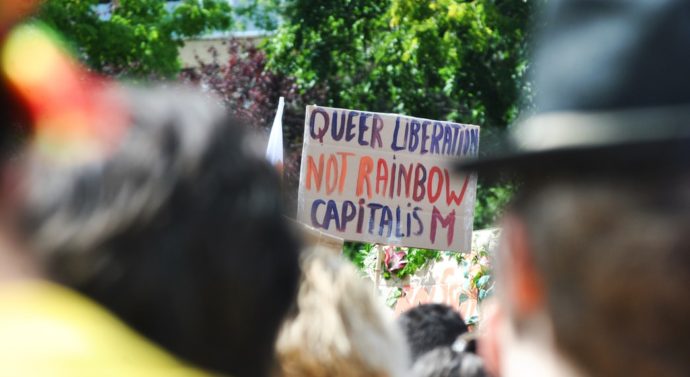
Disney’s Faux Progressive Window Coating Penetrates into Star Wars
Editorial February 7, 2020, Comments Off 110Diversity and representation has been in the conversation a lot the past few years. More minority groups being included more frequently in mass media is important. This is because it leads to a growing awareness of that minority group and allows its members to feel seen by society. That’s why you saw a lot of women supporting Wonder Woman, or a lot of gay support for Love, Simon.
For these reasons, Disney has seemingly been trying to increase the amount of LGBTQ+ representation in their films. But, well, it hasn’t exactly gone great.
In 2015, the first Star Wars movie in ten years was released (excluding The Clone Wars, which is a conversation for another time). Two of the main characters were Poe Dameron (played by Oscar Isaac), and Finn (played by John Boyega). The two actors and characters were playful, invigorating to watch, bounced off each other in fun ways, and had great chemistry.
Naturally, the gays went wild.
Two male characters in our favorite franchise had a gay subtext, purposeful or not. It was great to have these likable characters represent the gay community.
Rise of Skywalker ruined that subtext. It took that relationship that was meaningful to a lot of people and “no homo”ed it out of existence, and as a result, feels like a slap in the face to a community that loved the characters and their dynamic.
But wait; you read somewhere that there was a same-sex kiss in the movie. How can it feel anti-LGBTQ+? Well, rhetoric device, I’m glad you asked.
These two characters were not given a romantic spin on their characters in anything besides subtext for two movies. This allowed people to read into their relationships in ways the filmmakers may or may not have expected. Intentional or not, Finn and Poe came to represent inclusion in the franchise for a lot of people.
Rise of Skywalker takes that relationship and has Finn and Poe hate each other and view the other as romantic rivals for no reason while also giving each of them female romantic interests. For Finn, this isn’t technically textual, although it borders on it, but for Poe, it absolutely is. The film strips those two characters of that reading because they’re afraid of the movie being too queer.
And then at the end they toss in a gay kiss. Which is between two attractive females, one who was a minor character, the other was an extra. It’s also done in a way where it can easily be edited out for viewers who don’t like it. It feels pandering at best, fetishistic and homophobic at worst.
This is a problem that Disney has been continually struggling with. And failing at.
For Beauty and the Beast they promised LeFou was gay in the movie. As though the secondary villain character whose name translates to “the fool” being gay was excellent representation. He also is hardly shown to be gay at all in the actual film. Then, for Solo they said that Lando was pansexual, only for that to mean that he is in a relationship with a droid who is clearly coded female.
The pattern is that Disney continues to have poor representation, try to convince the audience it’s good to get liberal butts in seats, and only allows side characters to be kind of gay. The message they send to gay audiences is: “you are secondary, you are periphery elements that at most serve to distract from the real heroes, the straights.” Sure, there can be gays in Star Wars, but only the most minor of minor characters, and certainly not the leads. Those need to be unambiguously straight still. There was an opportunity to have a progressive bend to these movies, and all they had to do was nothing. But they couldn’t let that happen out of fear of losing a conservative audience.
Disney adds a fake veneer of progressive liberal ideals while refusing to commit to those ideals they pretend to uphold. They do not care about those ideals, they only care about appeasing as many people as possible and getting you to buy a ticket.
Article written by Jacob Maher.